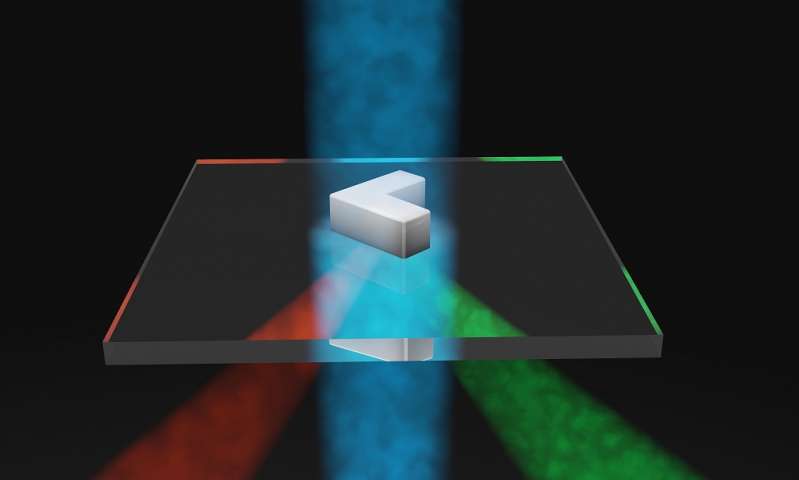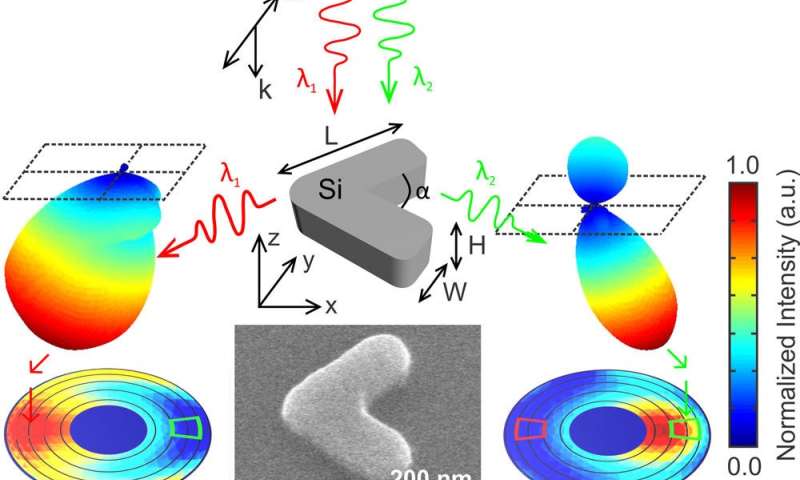A new silicon optical antenna that scatters different colors of light in different directions has been developed by a team of researchers at imec (Interuniversity MicroElectronics Center) and the University of Leuven (KU Leuven), both in Leuven, Belgium.

The device produces “bidirectional color scattering,” which enables the optical antenna to function effectively as a passive wavelength router for visible light. When a red light shines on it, the light turns right, but when the light is another color like orange, it turns left.
Standardly, an antenna’s size corresponds to the wavelengths it was designed for. As radio and microwave waves are on the scale of millimeters to kilometers, these antennas can be large. And since the wavelength of visible light is on the magnitude of a couple of hundred nanometers, tuning in requires nanosized antennas, which are much harder to create.
As a result, the researchers were exploring the possibility of manipulating directional light at these length scales using an antenna consisting of just one element. In 2013, using gold nanoantennas, they demonstrated the world’s smallest unidirectional optical antenna shaped like a V. Metallic antennas support “plasmonic modes,” which differ in form from the optical modes supported by a dielectric antenna.
By switching to a dielectric V-shaped antenna made from silicon, the researchers were able to achieve bidirectional scattering that differs depending on the wavelength of the incoming light. The shift in direction is gradual: if the wavelength decreases from 755 nm to 660 nm, the scattering direction will slowly change from left to right.

Using silicon as opposed to gold is advantageous. It circumvents Ohmic absorption losses, which is the primary drawback of plasmonic nanoantennas. Additionally, the silicon antennas have a large scattering cross-section, meaning they can efficiently interact with light.
As far as applications go, the device can be used in innovative light sensors, light-matter manipulation, and optical communication. The bidirectional optical antenna can also be used to make cheaper, more compact, and more efficient devices for measuring light, such as optical sensors and photodetectors. Additionally, they can be used in multiple areas, including life sciences, photovoltaics, optical fibers, environmental monitoring, LIDAR, holography, and quantum computing – all which the researchers plan to explore in the future.
Source: Phys.org
Advertisement
Learn more about Electronic Products Magazine





